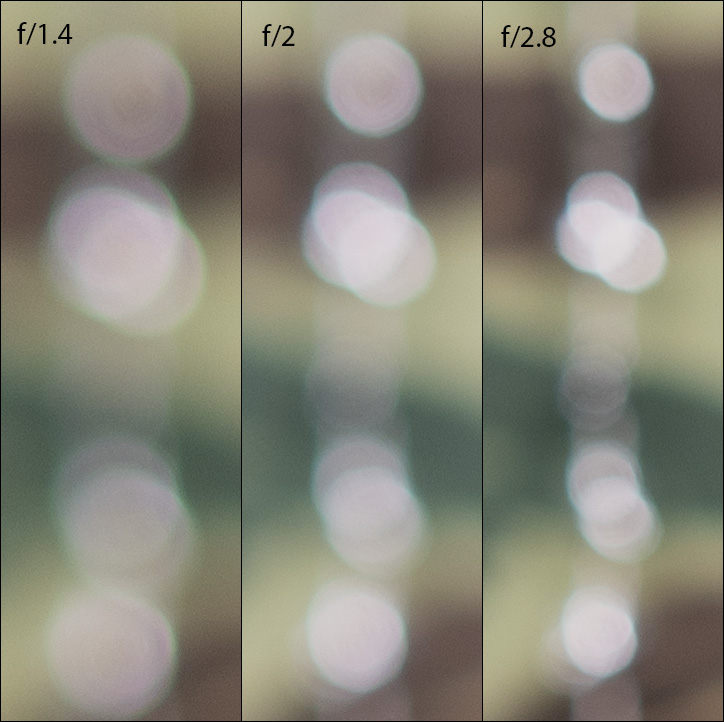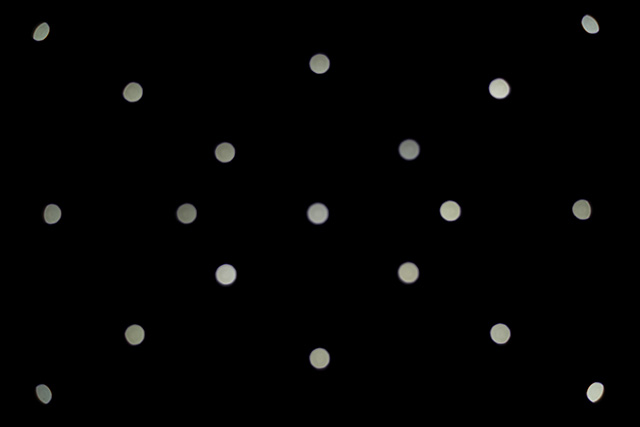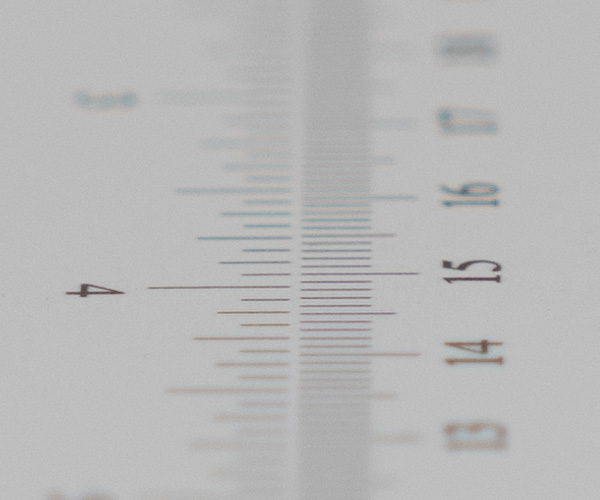by Klaus Schroiff, published September 2019
Introduction
The Samyang AF 50mm f/1.4 FE (aka Rokinon) is one of the first third-party full format lenses that were released for Sony FE cameras – thus it’s about time for us to have a look whether it’s worth it. In a typical Samyang fashion, they are tackling the market from a value perspective. You can purchase the lens for as little as 500USD/EUR – which is a third of what you’d have to pay for Sony’s own Zeiss Planar T* FE 50mm f/1.4 ZA. To be honest though – that Zeiss lens has a mad price tag to start with but it leaves the market wide-open to such alternative offerings.
The build quality of the AF 50mm f/1.4 FE is very good. The lens body is made of metal ( aluminum-alloy) including the focus ring. Weather-sealing is not provided. While it has a slightly matte finish, it is rather slippery. The focus ring operates smoothly. A petal-shaped lens hood is part of the package. This may sound all fine but it still lacks the final refinement which would make it a true premium offering,

The AF motor is reasonably fast without being a true speed demon though. It’s also near silent. Manual focusing works by-wire – as usual. The manual focus action is fairly coarse although that’s probably not an issue for most users.
| Specifications | |
|---|---|
| Optical construction | 9 elements in 8 groups including 3x aspherical elements |
| Number of aperture blades | 9 (rounded) |
| min. focus distance | 0.45m (max. magnification 1:6.67) |
| Dimensions | 73.5×97.7mm |
| Weight | 585g |
| Filter size | 67mm |
| Hood | petal-shaped (bayonet mount, supplied) |
| Other features | – |
| Mount | Sony FE |
Distortion
The Samyang AF 50mm f/1.4 FE produces a very minimal barrel distortion (0.2%) in RAW mode. With active image auto-correction, the remaining traces are gone.


Vignetting
Vignetting is always a bit of an issue with fast lenses mounted on full format camera and the Samyang lens is no exception here. Its native light falloff is quite heavy at just over 2EV (f-stops) at f/1.4 and it’s still visible at f/2.
This is nothing to worry about with image auto-correction, of course (other than increased corner noise). In this case, the vignetting is already moderate at fully-open aperture and a non-issue beyond.
This is, of course, very different in uncorrected mode. At f/1.4 the vignetting is rather massive in this case (~2.8EV) and still very noticeable at f/2. The situation eases at f/2.8 and it’s good beyond.

MTF (resolution)
Following the recent review of its cousin – the Samyang AF 35mm f/1.4 FE – we hoped that the Samyang AF 50mm f/1.4 FE would have a similar (excellent) characteristic but this is not the case. While the dead center quality is very good at f/1.4, the resolution drops dramatically towards the outer image field. In fact, the borders/corners are dismal. The center zone improves substantially at f/2 but the borders/corners remain very soft. f/2.8 is still not great overall but there’s a massive boost at f/4 where the outer image field is finally sharp. The best quality is reached around f/5.6 where the performance is actually quite remarkable. Diffraction has, as usual, a higher impact beyond f/11.
The field curvature is low. The centering quality of the tested sample was good.
Please note that the MTF results are not directly comparable across the different systems!
Below is a simplified summary of the formal findings. The chart shows line widths per picture height (LW/PH) which can be taken as a measure for sharpness. If you want to know more about the MTF50 figures you may check out the corresponding Imatest Explanations

Chromatic Aberrations (CAs)
Lateral CAs are on a low level with an average CA pixel width below 1px at the image borders. They do, however, increase quite a bit in the extreme image corners.

Bokeh
The resolution characteristic leaves something to be desired but what about the quality of the bokeh then? After all, that’s probably the primary reason for you to be interested in such a lens.
Out of focus highlights are nicely rendered. At/near the image center, they have a perfect circular shape at f/1.4 and f/2. The inner zone shows a very slight onion-like substructure but it’s hardly noticeable really. The more edgy aperture shape starts to show up from f/2.8 onward. You may spot the greenish halo around the discs – this is bokeh fringing (see also the next chapter).

The quality of the general blur is a bit of a mixed bag. In the background (shown to the left below), the rendering is somewhat uneven. The foreground blur (to the right) is smoother in comparison.

The circular shape of the discs is, as always, deteriorating towards the corners and the “cat eyes” at clearly visible at f/1.4 here. Stopping down reduces this vignetting effect but it’s not too pleasant at f/2. It’s better at f/2.8 albeit that won’t help in terms of shallow depth-of-field, of course.



Bokeh Fringing / LoCA
Boheh fringing (sometimes referred to as LoCA) is an axial color fringing effect with purplish halos in front of the focus point and greenish beyond. The Samyang AF 50mm f/1.4 FE produces very pronounced fringing at large-aperture settings and traces remain visible at f/4.




Sample Images
Competition
The Samyang AF 50mm f/1.4 FE (left) has two main competitors at the time of this review – the Zeiss Planar T* FE 50mm f/1.4 ZA as the Sigma 50mm f/1.4 DG HSM ART. We haven’t tested the Zeiss lens yet but it has a very good reputation. And it better should be excellent regarding its excessive price tag. The Sigma lens resides just above the Samyang lens in terms of pricing. It’s a bit of an odd lens because it’s actually based on the DSLR variant and was merely adapted to Sony FE mount by extending the lens barrel. Still – it’s better than the Samyang but besides being longer, it’s also substantially heavier.

Visual comparison courtesy of camerasize.com.
The Samyang AF 50mm f/1.4 FE is a bit of a disappointment. It's not exactly a small lens and it's obvious that Samyang spent some efforts designing it but the performance is just not good enough for a high-resolution sensor. The center quality is fine but the resolution falls apart towards the outer image field at large-aperture settings. Conversely, the results are great at medium apertures but that's not the sole reason for buying such a lens. To be fair, however - in real life this may not be that much of an issue. How often do you require sharp corners at f/1.4 or f/2 after all? Lateral CAs are low - at the borders at least - whereas axial CAs are very pronounced. The native image distortion is very low. The vignetting is taken care of by image auto-correction. In RAW mode, the light falloff is high at f/1.4 though. The quality of the bokeh has two sides. Highlights are nicely rendered in the center zone, less so in the corners. The rendering of the general out-of-focus blur could be better in the background.
The build quality is impressive but stays just short of professional-grade expectations. Namely, weather-sealing is absent. That being said the all-metal construction is solid. The AF speed is quite fast and it's near-silent. While the focus ring is very smooth to handle, the actual focusing is a bit on the coarse side in manual (by-wire) mode.
Overall we are not convinced that the Samyang AF 50mm f/1.4 FE is a good choice in this class. That's, of course, easily said given the price tag of the Sony/Zeiss alternative. If you are on a budget and can stand the weight, maybe consider the Sigma 50mm f/1.4 DG HSM ART or settle for something slower like the Zeiss Sonnar T* FE 55mm f/1.8 ZA.
-
Optical Quality
-
Build Quality
-
Price / Performance


